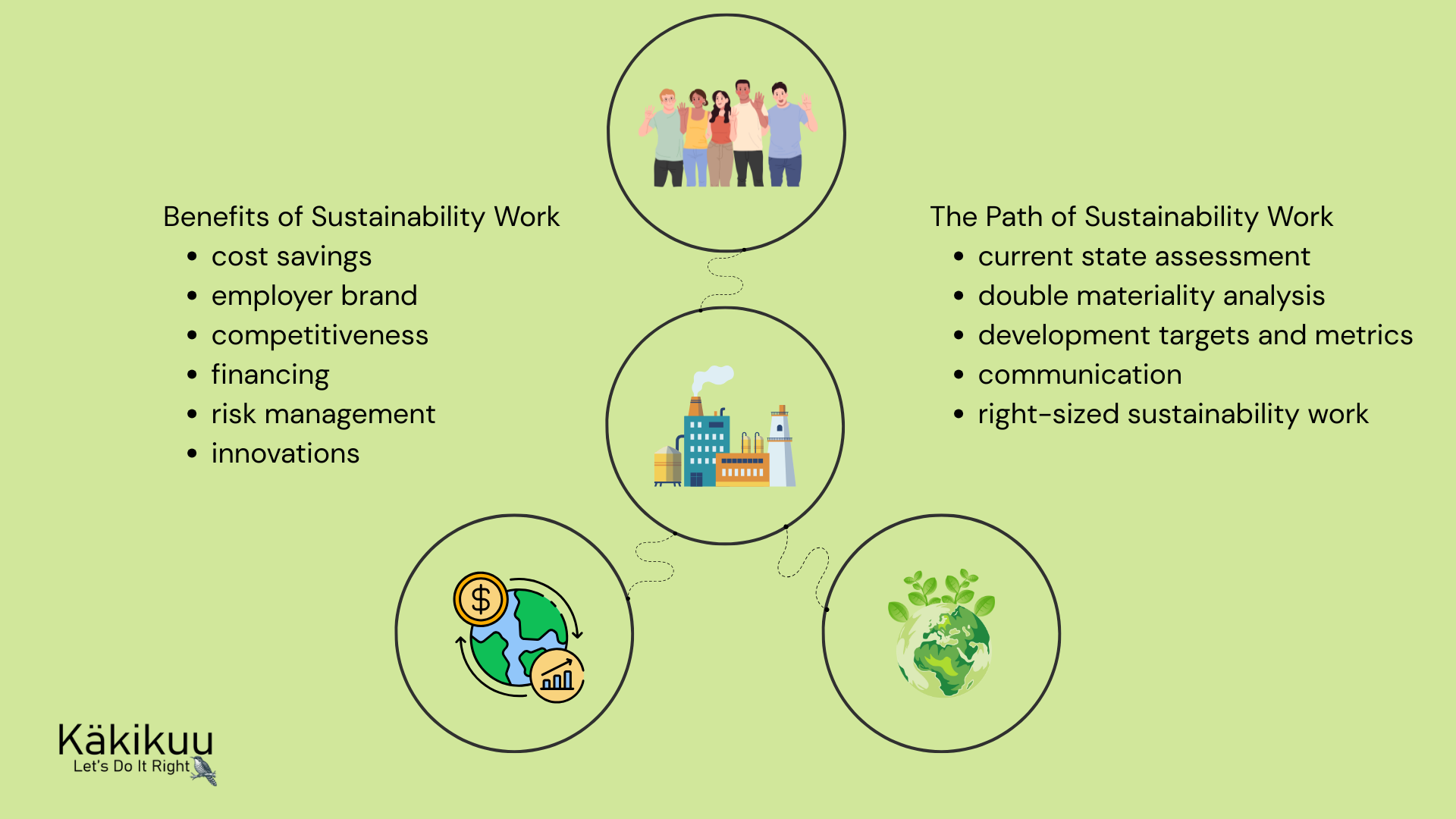The concept of sustainability is on everyone's lips. You know this for sure when even taxi drivers might bring up the topic—or at least comment on companies’ responsibility or lack thereof. There's so much buzz around sustainability right now that some people don't even want to hear about it anymore. But what is driving this sustainability boom? Where does it come from, and what’s behind it?
A crash course in corporate responsibility can be summed up in three sentences: Climate change, driven by our human-made take-make-waste economy, forces us to take action—the sooner, the better. The European Union’s Green Deal aims to minimize the impacts of climate change by shifting from a linear economy to a circular one, reducing greenhouse gas emissions, and halting biodiversity loss. For companies, this means aligning all operations with sustainable development alongside the rest of society—acting responsibly toward people, the environment, and the economy, for example by genuinely taking care of their employees, investing in renewable energy sources, and not spending all their profits on enriching owners, but instead redistributing them in line with legal obligations and contributing fairly to society and their local communities.
The broader goal is to ensure that future generations have good living conditions on this planet, without depleting our resources or passing the bill on to those who come after us.
Behind today’s hottest buzzword—sustainability—lies the pursuit of sustainable development and, through it, the fight against climate change. However, sustainable development and responsibility aim for much more: the broader goal is to ensure that future generations have good living conditions on this planet, without depleting our resources or passing the bill on to those who come after us.
To achieve this, many things must change. At the core of all our actions are our values—the things we consider important and right. We tend to reflect on our values especially during major changes in our lives. It’s also wise to do so when significant changes are happening in the world around us. Just like right now.
Our planet can no longer withstand the illusion that humans can control nature. The more the population grows, the more damage our current way of living causes. The proposed solution is to shift from the “consume and discard” economy to a circular economy—one without waste or depleted natural resources. In a circular economy, raw materials are continuously kept in use, circulating again and again. Nature is recognized as an invaluable asset with which humanity must live in balance.
Sustainability, then, involves the kind of systemic change described above—where everything is seen as interconnected in the future. At the heart of it all is design: design that enables a circular economy and responsible consumption. And these processes are by no means ever finished—they remain under constant review and development. Even long after we ourselves have gone into the cycle in a wooden box. And for a long time after that.


What does sustainability mean from a company’s perspective? Key points summarized on one slide.




0 Comments